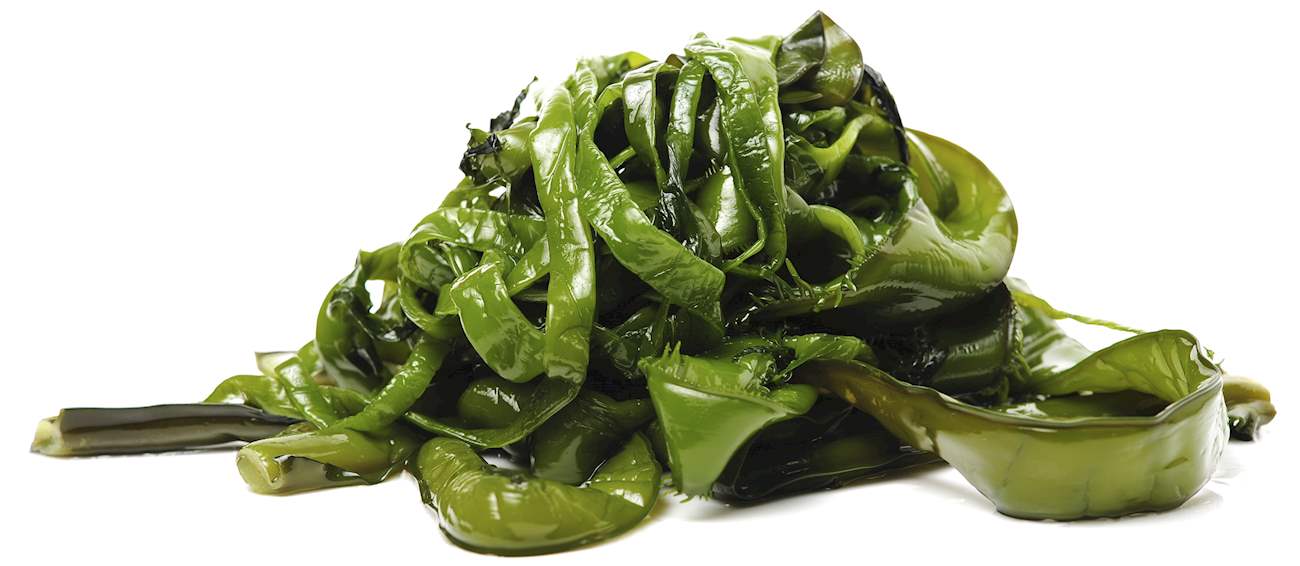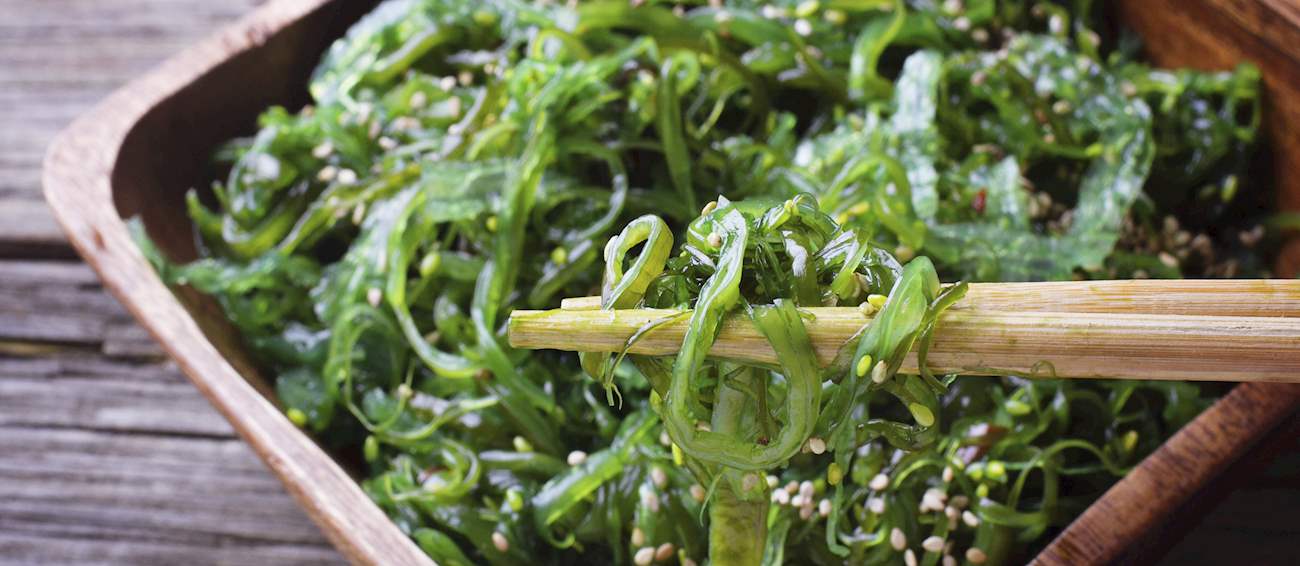Wakame
(ワカメ, わかめ, 若布, 和布, Qúndài Cài, 裙带菜, Wakamé, Fougère des Mers, Miyeok, 미역, Sea Mustard)
Wakame is a type of edible brown seaweed, reported to have numerous health benefits. Like other forms of seaweed, it usually comes in dry form and needs to be rehydrated before use. Its flavor is neutral, lightly briny, and slightly sweet.
In its dry form, the color of wakame is dark green, but when rehydrated, it turns into a bright, glossy, and vibrant green color. In Japan, it has been consumed for thousands of years, and some archaeological evidence shows proof of its consummation dating back to 3000 BC.
From the Nara period (710 AD) it has been cultivated by Japanese farmers, and at one point it was even used for taxation purposes. Nowadays, wakame is grown in Australia, New Zealand, and France, and since the 1980s and the big macrobiotic movement, it has been a widely popular ingredient in the United States of America.
During cooking, wakame leaves tend to expand, so they should be cut into smaller pieces. They are incorporated in numerous dishes - typically in refreshing salads and comforting soups. Wakame also goes well with noodles, seafood, or rice dishes. As a species, wakame is highly invasive and its existence outside of the controlled environment is closely monitored and considered undesirable.




